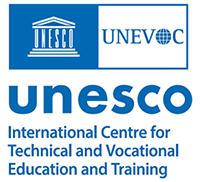
The UNESCO-UNEVOC International Centre: Who We Are | What We Do | Working With Us | Get in Touch
The UNEVOC Network: Learn About the Network | UNEVOC Network Directory
For Members: UNEVOC Centre Dashboard
Thematic Areas: Inclusion and Youth | Digital Transformation | Private Sector Engagement | SDGs and Greening TVET
Our Key Programmes & Projects: BILT: Bridging Innovation and Learning in TVET | Building TVET resilience | TVET Leadership Programme | WYSD: World Youth Skills Day
Past Activities: COVID-19 response | i-hubs project | TVET Global Forums | Virtual Conferences | YEM Knowledge Portal
Our Services & Resources: Publications | TVET Forum | TVET Country Profiles | TVETipedia Glossary | Innovative and Promising Practices | Toolkits for TVET Providers | Entrepreneurial Learning Guide
Events: Major TVET Events | UNEVOC Network News
This indicator presents the share of young people who are not in employment, education or training (NEET), as a percentage of the total number of young people in the corresponding age group, by gender. Young people in education include those attending part-time or full-time education, but exclude those in non-formal education and in educational activities of very short duration. Employment is defined according to the OECD/ILO Guidelines and covers all those who have been in paid work for at least one hour in the reference week of the survey or were temporarily absent from such work. Therefore NEET youth can be either unemployed or inactive and not involved in education or training. Young people who are neither in employment nor in education or training are at risk of becoming socially excluded – individuals with income below the poverty-line and lacking the skills to improve their economic situation.
The indicator presents the share of young people who are neither in education and training nor in employment, as a percentage of the total number of young people in the corresponding age group. Young people in education include those attending part-time as well as full-time education, but exclude those in non-formal education and in educational activities of very short duration. Employment is defined according to the ILO Guidelines and covers all those who have been in paid work for at least one hour in the reference week of the survey or were temporarily absent from such work.
The indicator young people neither in employment nor in education and training, abbreviated as NEET, corresponds to the percentage of the population of a given age group and sex who is not employed and not involved in further education or training. The numerator of the indicator refers to persons meeting these two conditions:
Young people neither in employment nor in education and training (NEET) – calculated as the percentage of the population of a given age group (usually 15-24) who are not employed and not involved in further education or training.
 Source:
Source: Cedefop, Glossary. Terminology of European education and training policy, (accessed 03/2023)
Cedefop, Glossary. Terminology of European education and training policy, (accessed 03/2023)